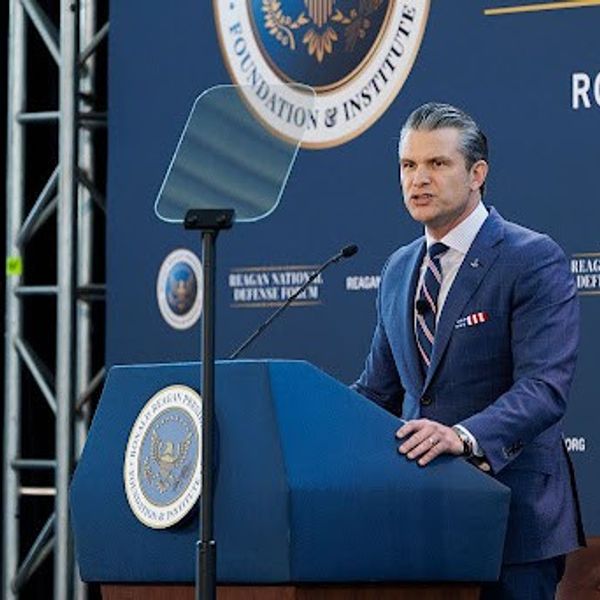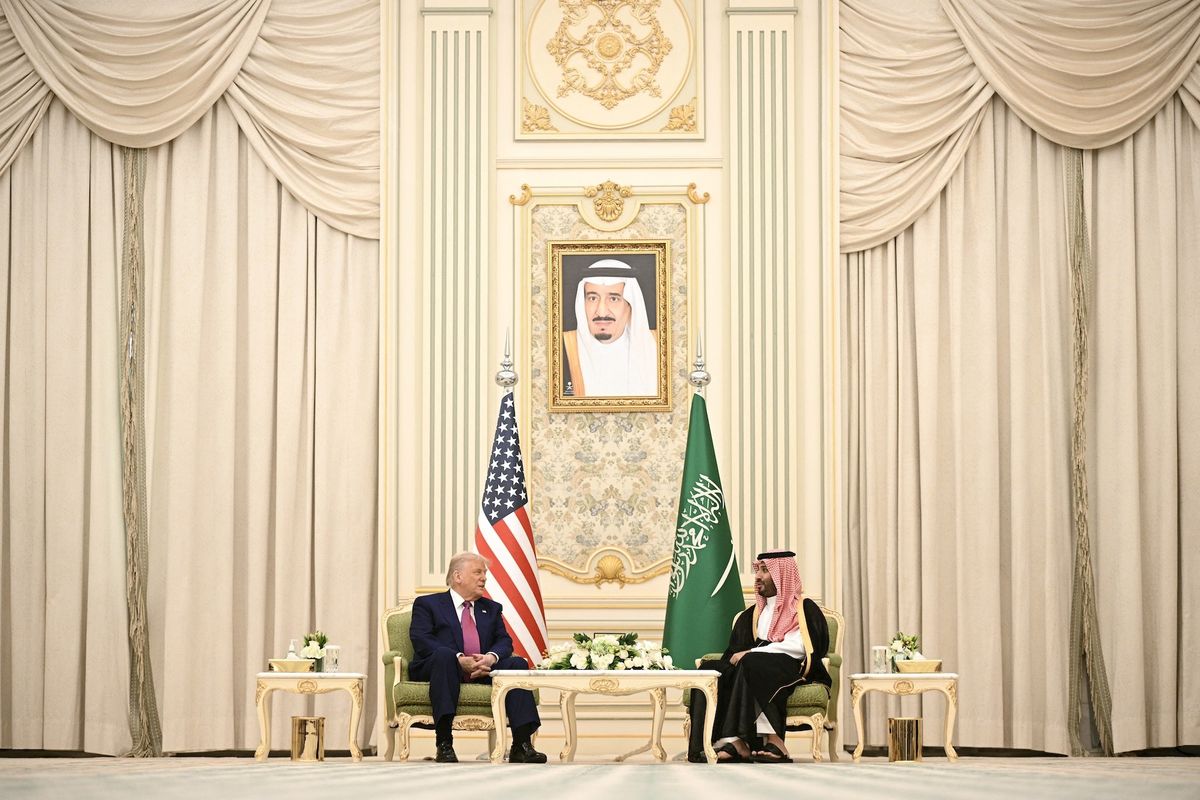OPINION — President Trump’s scheduled trip to Poland this coming weekend to participate in that country’s Sept. 1, 80th anniversary of the start of World War II will showcase his administration’s growing diplomatic and military relationship with Warsaw’s increasingly rightist regime.
On the political side, it also fits in with Trump’s re-election plans since, as the President himself pointed out during his June 12, Washington press conference with visiting Polish President Andrzej Duda, “The United States has a tremendous Polish population. They were very much in favor. They liked me and I like them, and a lot of them voted for Trump.”
Many Polish-Americans live in Pennsylvania, Michigan, Wisconsin and Ohio, states which helped give Trump his 2016 Electoral College victory.
Trump’s visit will also inevitably highlight the increasing number of U.S. armed forces and facilities in Poland—a movement that Russian President Vladimir Putin’s government has described as a “dangerous buildup of military capabilities on the continent.”
Last Wednesday, responding to the Pentagon’s testing of a land-based, Tomahawk cruise missile just two weeks after the U.S. officially withdrew from the 1987 Intermediate-range Nuclear Forces (INF) treaty, Putin said, “Launches of this missile can be carried out from systems already located in…Poland. All you have to do is change the software…This entails new threats for us that we must react to.” Putin said that for Russia, the American test signified “the emergence of new threats, to which we will react accordingly.”
What Putin was referring to was the ground-based $300 million, U.S. Navy Aegis Ashore anti-ballistic-missile system that has been under construction since 2016 near Redzikowo, in the northern part of Poland near the Baltic Sea. U.S. military, government and contractor personnel are already operating out of the facility, and $71 million is in the 2019 Pentagon budget to complete its construction.
When operational next year, it will consist of an AN/SPY-1 radar, 24 SM-3 interceptor missiles and a staff of approximately 300 active duty, civilian and contractor personnel.
The MK-41 launchers that are being installed at the U.S. Aegis Ashore facility in Poland are programmed to fire the anti-ballistic missile SM-3 interceptors, but it is the same launcher that was reprogrammed to launch a ground-based, Tomahawk offensive cruise missile, as the Trump Pentagon did on Aug. 19.
In fact, while the U.S. has claimed for years that the MK-41s were only able to be used for defensive SM-3 interceptors, Moscow has argued, as Putin did last week, that their installation in Poland would amount to a U.S. violation of the INF treaty, if it had not already withdrawn.
Planning for the Aegis Ashore facility began in 2005 under President George W. Bush and was modified under President Barack Obama, but it is far from the only U.S. military activity underway in Poland in order to meet a possible Russian threat.
In fact, the U.S. has had a quasi-permanent force in Poland since 2012, when an Air Force detachment from the 52nd Fighter Wing began year-round operations at Poland’s Lask Air Base, rotating fighter and cargo aircraft trainer pilots throughout the strategically-important central European nation.
In response to Russia seizing Crimea, President Obama at a June 3, 2014, meeting in Poland committed $1 billion to increase the U.S. military presence in Europe. Then-Polish President Bronislaw Komorowski responded by promising to increase funding to modernize the Polish armed forces up to the level of two percent of the GDP, as agreed earlier by NATO members.
Funds for a “$200 million facility for prepositioning Army combat brigade equipment in Poland” were included in a continuing appropriations bill that was approved in January 2016 and signed by Obama – a year before Trump took office.
Elements of that Obama plan continue this year with the U.S. Army Corps of Engineers scheduled to contract out construction of a NATO-funded, $250 million, eleven-building, warehouse and maintenance complex on the Polish Air Base at Powidz, in the central part of that country.
The facilities are to be operational by 2021, and are to house prepositioned stock for a U.S. Army armored brigade combat team’s equipment along with air-defense and fire-support weaponry.
In addition, the Corps of Engineers plans to take bids in 2020 for the construction of a $100 million, barricaded munitions storage area, also at Powidz Air Base.
Preparations for these facilities are underway. In 2017, the U.S. Army moved a 100-person mission from Germany to the Polish city of Poznan to set up a command headquarters for all Army operations in the Baltics and Poland.
In October 2018, a contract was awarded for cutting and clearing trees in a 94-acre forest area within Powidz Air Base for the prepositioned military equipment facilities. Another $25 million, three-year project was started to establish a new rail line inside the air base along with a load/unload, logistics area associated with the planned new warehouse complex.
Although this construction activity is taking place during the Trump administration, it was part of Obama’s European Reassurance Initiative (ERI), which the Trump White House has renamed the European Deterrence Initiative (EDI).
The Poles, who worry about Russian resurgence under Putin, have responded by seeking an even larger U.S. military presence.
In May 2018, Poland’s Defense Ministry put together a 39-page plan that contained “a proposal for the United States to develop a permanent presence in Poland,” which involved in part “a joint-basing agreement with the United States to host one U.S. armored division.” The proposal said, “Establishing such a force is necessary to present an unequivocal challenge and deterrence to Russia’s increasingly emboldened and dangerous posture that threatens Europe.”
Also in May 2018, the U.S. Air Force confirmed that its MQ-9 Reaper drones had started flying intelligence, surveillance and reconnaissance (ISR) missions from Miroslawiec Air Base in eastern Poland. The base was already home to Poland’s smaller UAV platforms.
On September 18, 2018, Polish President Andrzej Duda at a White House meeting told President Trump that Poland was willing to provide $2 billion for a separate, permanent U.S. base in Poland, which he offered, perhaps in jest, to name “Fort Trump.”
Trump said, “We are grateful for Poland’s leadership on defense spending and burden sharing in NATO. I want to commend Poland for meeting its NATO defense-spending obligations, and I am glad that it plans to increase spending beyond the two percent minimum obligation. Thank you very much for that.”
Trump ignored the fact that Poland had reached the two percent level in 2016, as it had pledged to do in 2014 to President Obama.
The U.S. build-up in Poland may not be over. At a hearing March 5, five months ago, Gen. Curtis M. Scaparrotti, Commander of the U.S. European Command, told the Senate Armed Services Committee, that “Poland has offered at least $2 billion towards U.S. basing in Poland, and the form of such an increased U.S. troop posture in Poland is currently being discussed in working groups under the auspices of a DoD-led Executive Steering Group.”
During President Duda’s White House visit this past June 12, Trump acknowledged to reporters they had discussed a new U.S. base in Poland for American troops.
“Poland wants to build a great military facility for the United States,” Trump said. “They’ll be putting up the money to build a very major military facility in Poland. And we are giving it very serious thought, and we’ll see how that all works out.”
Later at the same press conference Trump said, “A lot of money is going to be spent on a facility…A great one, in a very good location in Poland. And, actually, it will be spread over a little area. But, basically, one primary facility…They’re talking about 2,000 [U.S.] troops, but we’d be taking them out of Germany or we’d be moving them from another location. It would be no additional troops to Europe.”
Finally, Trump added, “We haven’t totally made up a decision. No. We haven’t finalized anything, but the facility itself would be world class.”
Don’t be surprised if word of the new Polish base and U.S. troop deployment there is announced during Trump’s visit to Poland next weekend.
Of course, the U.S.-Poland relationship has not been a one-way street.
As Trump noted near the end of the June press conference with Duda, “Poland has ordered 32 or 35 brand new F-35s at the highest level and the latest model. And I congratulate you on that. That means you have good taste.” At roughly $85 million each, that aircraft sale may push Polish future defense spending up to 2.5 percent of its GDP.
To celebrate that moment, Trump and Duda and their wives watched an F-35 flyover of the White House, which Trump had previously ordered, telling Duda and the reporters ahead of time, “They’re going to put on a very small show for us, but it’s going to be something.”
The U.S. military build-up in Poland has allowed President Trump to claim toughness toward Moscow despite his apparent deferential attitude toward Russian President Putin. He has repeatedly said and tweeted, “I have been far tougher on Russia than Obama, Bush or Clinton. Maybe tougher than any other President.”
Next weekend, if there is a new U.S. deployment announced for Poland, he may say that again.
Trump does not talk about Poland’s ruling Law and Justice Party, which is following an anti-democratic path of electoral autocracy, similar to that of Viktor Orban in Hungary. For example, President Duda’s party is in a multi-year battle to take over the country’s courts because many of its initiatives attack judicial independence and include laws designed to control the media, limit civil liberties and politicize the civil service.
Michael Fitzsimmons, a Visiting Research Professor at the Army War College, last September, questioned permanently stationing additional U.S. forces in Poland, saying it “would represent a powerful signal to the capitals of Europe and beyond of U.S. tolerance for the erosion of liberal democracy” and would “undermine E.U. [European Union] efforts to moderate Warsaw’s backsliding.”
Read more Fine Print from Walter Pincus in The Cipher Brief














